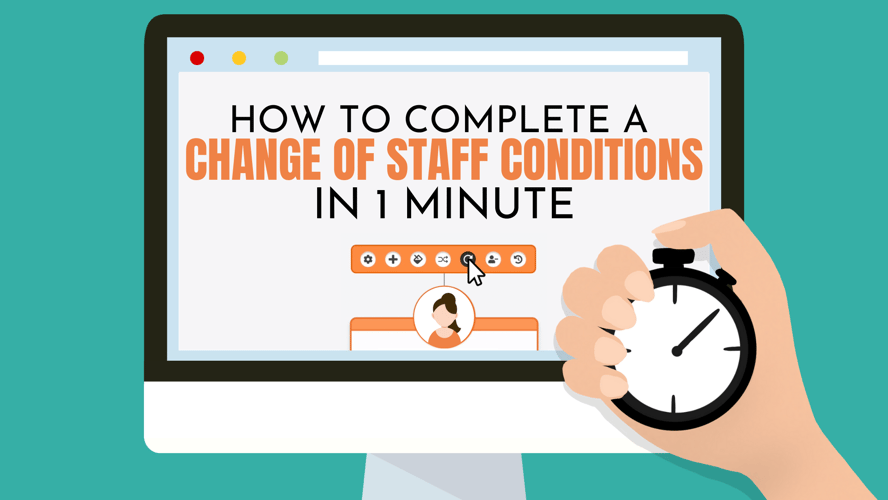Can your HR Systems keep you compliant and out of jail?
Don’t pay the price personally for being non-compliant
There are many different hats HR Practitioners are expected to wear during their working day. Compliance is one of them and is extremely important as non-compliance can carry severe penalties not only for the organisation the HR Practitioner works for but also for themselves. Concerning some HR Practitioners might not even be aware that they can be held personally liable for organisational non-compliance.
Organisations are required by law to comply with the workplace obligations in the Fair Work Act 2009. They must ensure they pay their staff correctly and comply with record keeping and payslip requirements. The Fair Work Ombudsman is the Agency responsible for ensuring compliance with Australian workplace laws. Where an organisation is found to be non-compliant, the Agency can issue infringement notices that can result in organisations facing on-the-spot fines, significant back pay and in serious cases court action. It can also mean penalties being issued to HR Practitioners. This was the case for an HR Manager who was personally fined $21,760 for her involvement in her company underpaying its employees a total of $583,688 over a 16-month period in 2013-2014. For further details refer to Fair Work Ombudsman v NSH North Pty Ltd trading as New Shanghai Charlestown.
This particular case sends a strong message to the HR community that the Fair Work Ombudsman will use the accessorial liability provision under the Fair Work Act 2009 to protect vulnerable workers and hold individuals to account for contravening workplace laws. Meaning HR Practitioners who are found to be involved in non-compliance of workplace laws can be prosecuted and not necessarily protected by the corporate veil.
So how can HR Practitioners protect themselves from being personally liable? To avoid putting yourself at risk you should follow the 10 steps below:
Step # 1 – Know which industrial instruments apply to your workforce

Several industrial instruments may apply to your organisation’s workforce and you need to be across each of them to ensure you are complying with the relevant provisions. Check your understanding and interpretation of clauses in relation to pay, penalty rates, loadings, allowances and leave entitlements.
Step # 2 – Identify and maintain classification details in your payroll system

Identify and record the correct classification and pay level for each job covered by an applicable Agreement or Modern Award. Keep these details up-to-date in employee records in your HR/Payroll system. This will greatly assist when auditing your company’s pay rates against the applicable Award pay rate increases.
Step # 3 – Keep up-to-date and monitor workplace law changes

It’s important to stay up-to-date with any changes to employment legislation, pay rates and conditions contained in Awards, Agreements and the National Employment Standards. Subscribing to newsletters and media releases issued by Fair Work or AHRI can keep you well informed. Note relevant changes and implement as early as possible so you don’t get caught out if you suddenly get busy.
Step # 4 – Get expert advice
Get legal advice if you’re not sure whether a change to legislation applies to your company, or you need a second opinion about the correct interpretation of a clause in an Agreement or Award. Don’t risk misinterpretation. It can be very costly and a drain on resources to go back and fix.
Step # 5 – Use the tools and resources available at www.fairwork.gov.au

Access the many tools and resources available online to assist employers to understand their obligations. Alternatively, contact the Fair Work Infoline on 13 13 94.
Step # 6 – Review and adjust pay rates, allowances, penalties, loadings, etc. every 6 months

Conduct an audit at least biannually pay rates for your Award covered positions and compare to applicable Award rates. This is important if you pay above Award rates. Changes to Award rates can creep up on you and you suddenly find yourself in a situation where pay rates have slipped below applicable Award rates.
Be mindful that even though you may pay above Award rates that your employees are actually better off overall when Award penalty rates, allowances, loadings and entitlements are taken into consideration. Where a salary is paid to an employee, it can only be set off against award entitlements where the salary passes the Better Off Overall Test and this is clearly provided for in a set-off clause in the employee’s employment contract.
Step # 7 – Invest in Recruitment, onboarding or HR/Payroll systems that automatically calculates relevant award compliance

For any HR software such as recruitment, onboarding, HRIS or Payroll… for any of them to help with pay-compliance, they need to ensure two things:
Data integrity and access control – so you need accountability against the people who are entering the pay data, and so the system should allow you to lock access to updating the pay data, to a certain group of people – perhaps one person only. So when something goes wrong, in this case, it becomes apparent that someone is underpaid, then you should be able to track the error back to the person who entered the data.
Easy system to use – The pay-complaint module in any of your HR technologies, needs to be so easy that it’s error-proof. Once the data (correct data that is!!!) is entered in such a module, from the users point of view, it should be so easy to use – for example, it should work something like this: Choose Role, Choose location, and that’s it they will have a very small pay range to choose from – 2 or 3 options no more than that.
Pay-compliance at the Recruitment phase – Stop the error creeping in from the very beginning. It’s so much better to get it right from the very beginning of the recruitment process, because you don’t want to advertise the wrong pay numbers, and then the HR team and Hiring managers start to throw these numbers during interviews and during job offers and eventually those wrong numbers find their way into the contract and before you know it, the person has been getting paid incorrectly for over a year! So it’s either your recruitment system should have pay compliance or it should allow integration with your HRMS/Payroll who have one and, and the pay data should flow automatically to recruitment and finally the contract.
Step # 8 – Don’t be complicit – speak up

If you come across or suspect that your organisation is not paying its staff correctly or not complying with workplace laws, speak up! It’s your duty as an HR Professional to do so. Act quickly to inform your Senior Manager or Executive Management team of the breach or potential breach and provide solutions to urgently address the issue. Identifying the problem and fixing it internally before it becomes an industrial matter is paramount.
Step # 9 – Record everything in writing

Document any identified breaches potential or otherwise in writing and include recommendations to address the issue(s). Be clear to inform your superiors of the risks to the organisation and to individuals who may be held personally liable. Follow up on the matters you have raised to ensure they have been acknowledged and are being addressed. Follow up again.
Step # 10 – Be prepared to walk away

In the unlikely event that the issue you have raised is not addressed by your organisation and non-compliance continues, ensure that you are not a part of it. Depending on the severity of the breach you may need to consider making the tough call to resign from your position.
HR Practitioners have a pivotal role in ensuring that staff are paid correctly and that their organisation is meeting its workplace obligations. Investing the time to keep up-to-date with legislation and following the 10 steps above will protect your employees, your organisation and its reputation and yourself.
Compliance is everyone’s responsibility. Protecting vulnerable workers from being exploited by organisations is a community issue and you should do everything within your power to report organisations who fail to do the right thing.






Blog comments